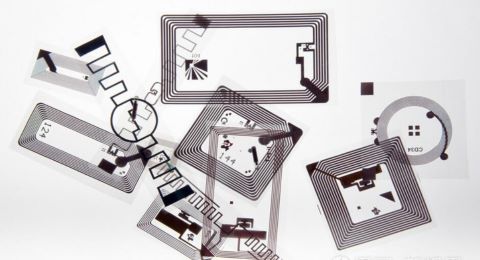400-9920-618
RFID electronic tags are composed of tags, rfid readers and data storage and processing systems. According to different power supply methods, RFID can be divided into three types: active RFID, semi-active RFID, and passive RFID. The memory is a chip with an antenna. The information in the chip can be used to identify the target. The main function is to identify the goods.

The difference between active, semi-active and passive RFID tags as follows:
1. Concepts
Active rfid is powered by built-in battery, a category of electronic tags defined by the different power supply modes of electronic tags, and usually supports long-distance identification.
Semi-active RFID is a special marker that integrates the advantages of active RFID tags and passive RFID tags. In most cases, it often enters the dormant state and does not work, and does not send RFID signals to the outside world. Only when it is within the activation signal range of the high-frequency activator, the active tag will be activated and work
Passive rfid, that is, the passive radio frequency tag adopts the carrier working mode, has anti-interference ability, users can customize the reading and writing of standard data, the efficiency is very convenient in a special application platform, and the reading distance can reach more than 10 meters.
2. The working principle
Active electronic tag means that the energy of the tag's work is provided by the battery. The battery, memory and antenna together constitute an active electronic tag. Different from the activation form of passive radio frequency, the active RFID is equipped with an independent storage element inside. Full energy, and still send out information by setting the frequency band before the battery is replaced.
Active tags have a larger working distance, larger storage capacity, and stronger computing power due to their continuous energy supply, and can actively send signals containing interactive information at specific frequencies to the reader. The working reliability is high, and the signal transmission distance is long. However, due to the influence of battery energy, the life of active tags is limited, generally only 3-10 years. With the consumption of battery power in the tag, the distance of data transmission will become smaller and smaller, which will affect the normal operation of the RFID system.
Semi-active rfid, common active electronic tags work in the 433M frequency band or the 2.4G frequency band. Works fine after being activated. The activation distance of the high-frequency activator is limited, and it cannot be accurately activated in a small distance and a small range. In this way, the active tag is positioned with the low-frequency activator as the base point, and different base points are installed in different positions, and then a large The area uses a long-distance reader to identify and read the signal, and then uploads the signal to the management center by different uploading methods. In this way, the entire process of signal collection, transmission, processing, and application is completed.
Similar to the active tag, the semi-active tag also has a battery inside, but the battery only provides support for the circuit that maintains the data and the circuit that maintains the working voltage of the chip, and is used to drive the integrated circuit inside the tag to maintain the working state.
Before the electronic tag enters the working state, it has been in a dormant state, which is equivalent to a passive tag. The energy consumption of the battery inside the tag is very small, so the battery can last for several years or even up to 10 years. When the electronic tag enters the working area of the reader, it is stimulated by the radio frequency signal sent by the reader, and the tag enters the working state. The energy of the electronic tag mainly comes from the radio frequency energy of the reader, and the internal battery of the tag is mainly used to make up for the radio frequency field. Insufficient strength.
The performance of passive rfid tags is greatly affected by tag size, modulation method, circuit Q value, device performance and modulation depth. Passive tags do not have a built-in power supply, and are mainly powered by the beams sent by the RFID reader.
When the radio frequency signal of the electromagnetic field in which the tag is located is strong enough, the data information stored in the chip can be sent to the reader, usually including the tag identity information, the identification target or the relevant data of the owner.
Although the distance of passive electronic tags is short, the cost is low, the size is small, the service life is very long, and it can work in a variety of harsh environments, and can meet the needs of most practical application systems under different radio regulations. It is most widely used in the market.
How to choose RFID tag?
Active electronic tags have a long operating distance, and the distance between active RFID tags and RFID readers can reach tens of meters, or even hundreds of meters, but affected by battery capacity, the lifespan is short, and the volume is large and the cost higher.
Passive electronic tags are small in size, light in weight, low in cost and long in life. They can be made into different shapes such as sheets or buckles, and are used in different environments. Since there is no internal power supply, the distance between passive RFID tags and RFID readers is limited, usually within a few meters or more than ten meters, generally requiring higher power RFID readers.
Semi-active rfid : The price is relatively moderate, but the function is relatively small, and the practical application requirements are relatively minimal.